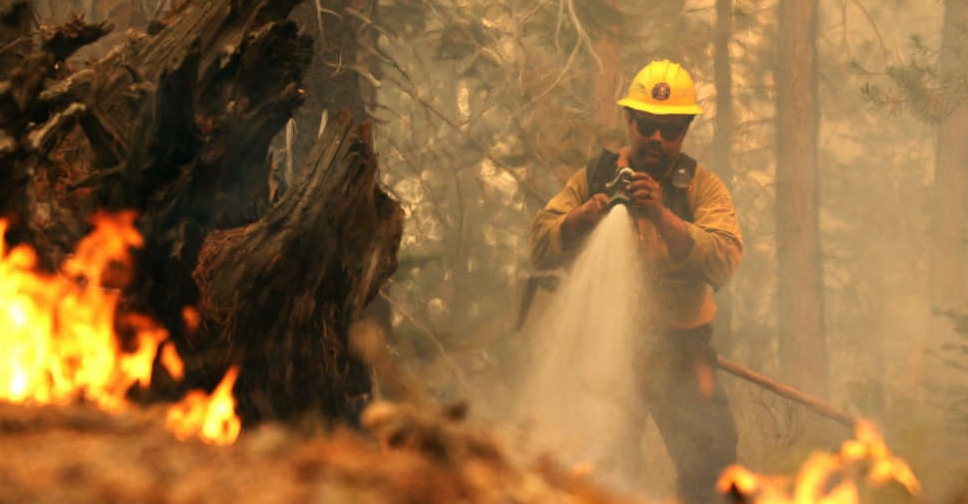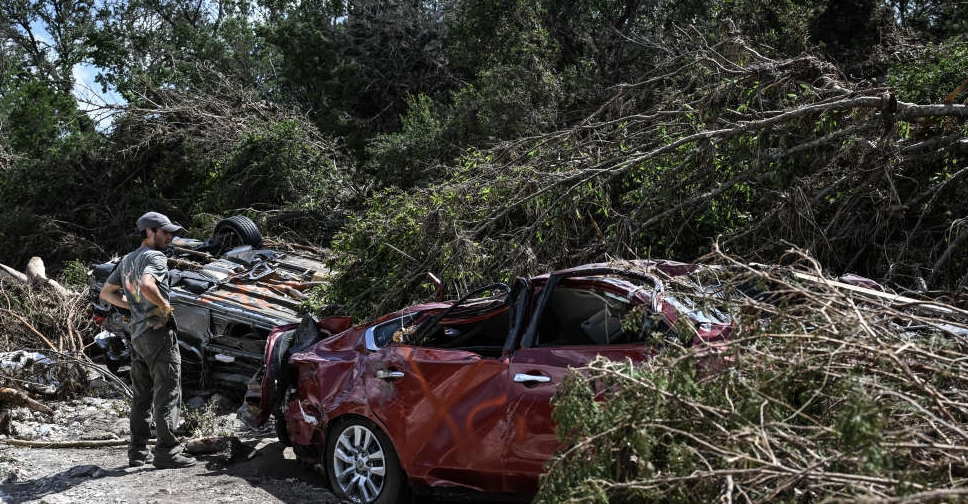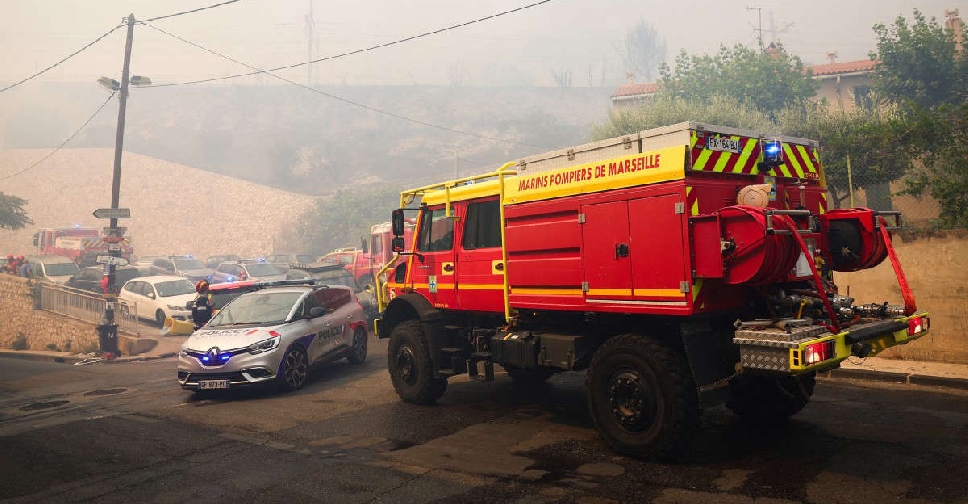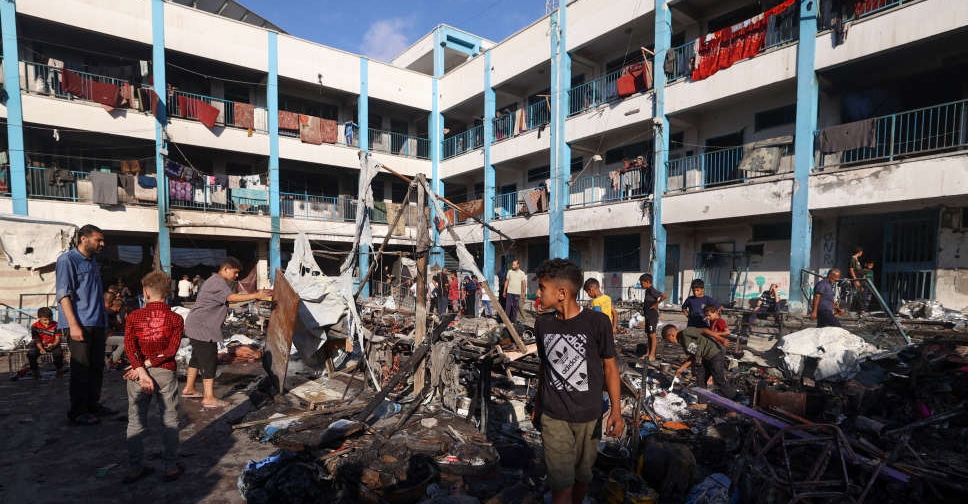
Firefighters waged an all-out battle in heavy winds to protect homes on the fringe of tinder-dry forests near Lake Tahoe from a wildfire that has chased thousands of people from the popular resort destination in California's Sierra Nevada range.
The Caldor fire, burning since mid-August in the mountains east of the state capital, Sacramento, crested a ridgeline and roared downslope on Monday toward the southern end of the Tahoe basin that straddles the California-Nevada border, triggering mass evacuations.
Traffic crammed local roads as South Lake Tahoe, a town of 22,000 residents, rapidly emptied along with several nearby villages, leaving the smoke-filled area normally thronged by summer vacationers largely deserted.
An estimated 50,000 people are under evacuation orders due to the Caldor blaze, according to the California Department of Forestry and Fire Protection (Cal Fire).
Two large spot fires crept to within 3 miles of South Lake Tahoe's city limits on Tuesday, and within 6 miles of the southern shore of Lake Tahoe itself, fire authorities said.
"There is a substantial amount of resources right now dedicated to protecting the homes and property in South Lake Tahoe,” U.S. Forest Service spokeswoman Dana Walsh told Reuters by phone Tuesday evening.
Walsh said the direction of the wind was such that "we're not expecting it to push (the fire) toward the lake this evening".
Jeff Hodge, a semi-retired banker who works part-time during the ski season as a chair-lift operator, recalled the dread and uncertainty he felt in the hours leading up to his evacuation Monday. Police going door-to-door showed up at his South Lake Tahoe apartment.
"For an older person, it was really unsettling," the 65-year-old said Tuesday at a Red Cross shelter in the town of Truckee, northwest of Tahoe.
Hodge told Reuters he packed a pair of guitars and amplifiers, ski equipment, golf clubs, a hamper full of clothes and a bottle of bourbon into his 1995 sedan, waited for traffic to abate and drove out in the afternoon as ash and soot rained down.
WIND-DRIVEN FLAMES
By Tuesday, the fire had charred more than 191,000 acres of drought-parched forests, some 14,000 acres more than the day before. Firefighters had managed to carve containment lines around just 16 per cent of its perimeter.
At least 669 structures were listed as destroyed on Tuesday, most of them single-family homes, with 34,000 more buildings considered threatened, Cal Fire spokesman Henry Herrera said.
No deaths have been reported. Three firefighters and two civilians were injured in recent days.
Smoke and soot from the fire has choked the usually pristine skies around Lake Tahoe for days, leading to an early exit by many tourists from a region renowned for its swimming, boating, hiking and camping. The area also is home to world-class ski resorts.
As of Tuesday, nearly 4,000 personnel and a squadron of over two dozen water-dropping helicopters were assigned to the blaze, whose cause remained under investigation.
Only the Dixie fire, which has charred 771,000 acres farther north in the Sierra, has engulfed more territory this year than Caldor.
Both fires are among nearly two dozen raging across California and scores of others elsewhere in the West, during a summer fire season shaping up as one of the most destructive on record. The blazes have been stoked by extremely hot, dry conditions that experts say are symptomatic of climate change.
More than 6,800 wildfires large and small have blackened an estimated 1.7 million acres within California alone this season, stretching available firefighting forces and equipment dangerously thin. Cal Fire and US Forest Service officials have described ferocious fire behavior seen across the region as unprecedented.
The Forest Service has closed all 18 national forests in California to the public through mid-September, an extraordinary measure the agency has taken only once before - during last year's catastrophic fire season. The shutdown officially begins at midnight on Tuesday.
A National Weather Service red-flag warning for dangerously gusty winds and extremely low humidity was posted for the Tahoe area through Wednesday night.




 Trump, Netanyahu meet a second time as gaps said to narrow in Gaza ceasefire talks
Trump, Netanyahu meet a second time as gaps said to narrow in Gaza ceasefire talks
 Death toll from Texas flood hits triple-digits as tally of missing tops 180
Death toll from Texas flood hits triple-digits as tally of missing tops 180
 Wildfire threatens Marseille, shuts down airport in southern France
Wildfire threatens Marseille, shuts down airport in southern France
 Gaza ceasefire can be reached but may take more time, Israeli officials say
Gaza ceasefire can be reached but may take more time, Israeli officials say



